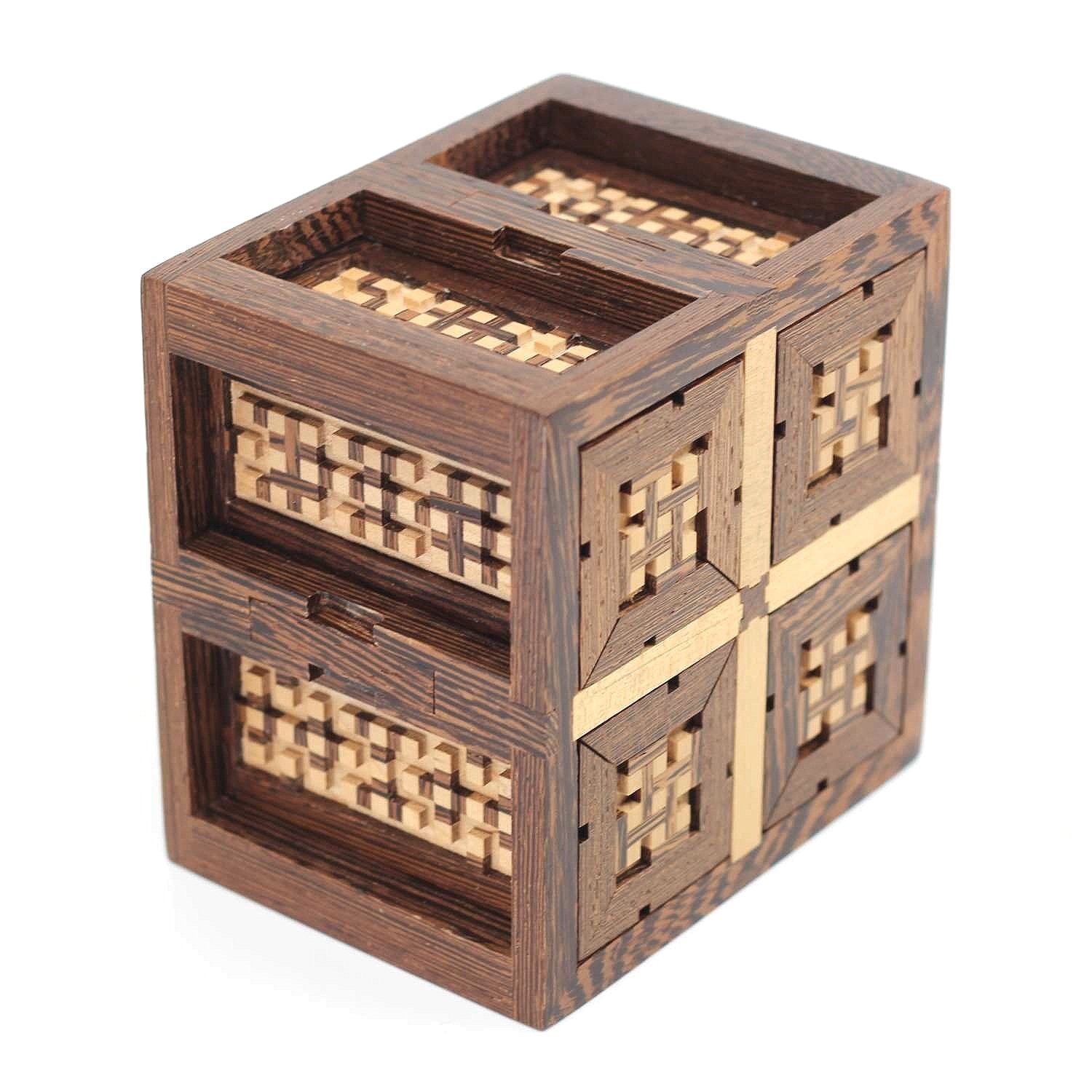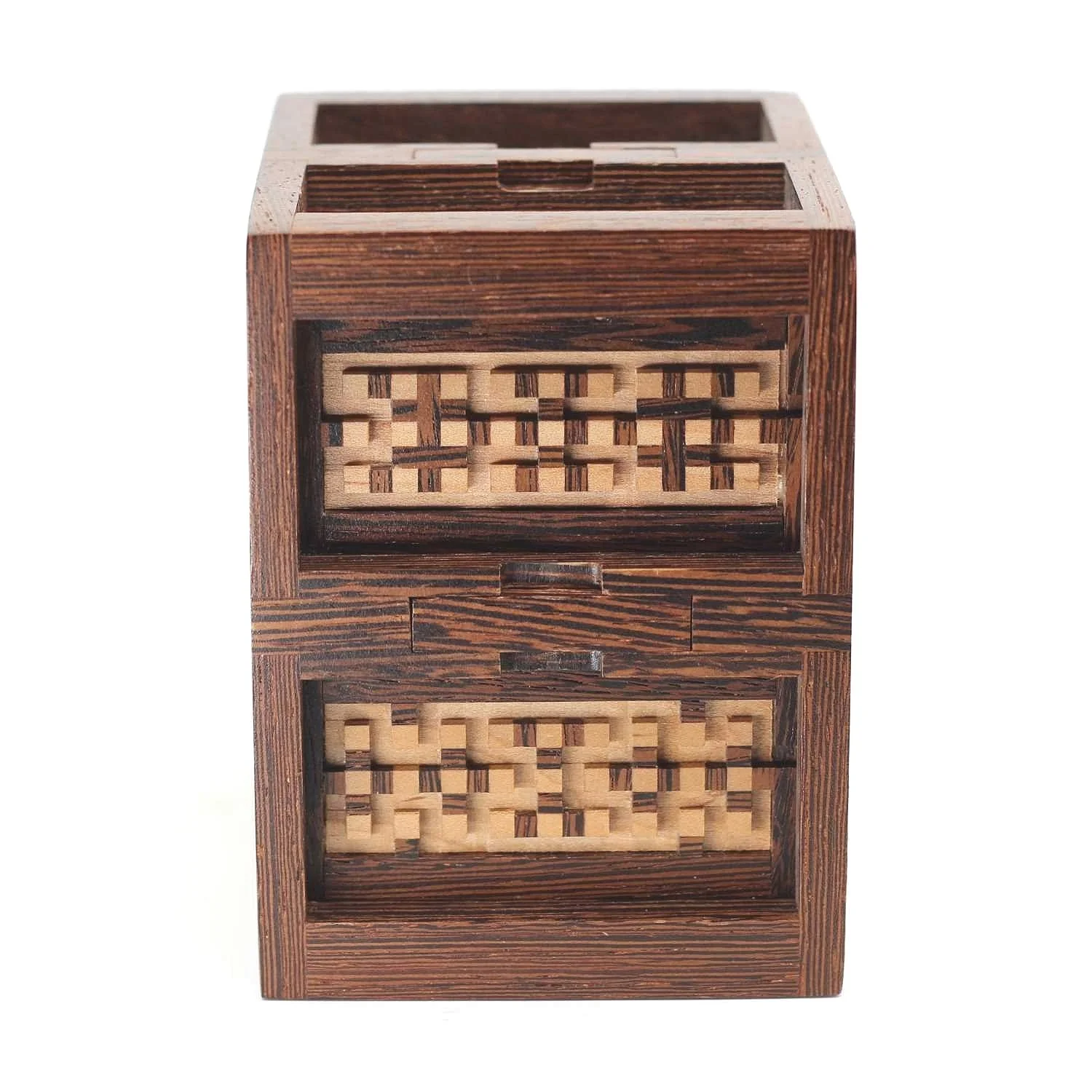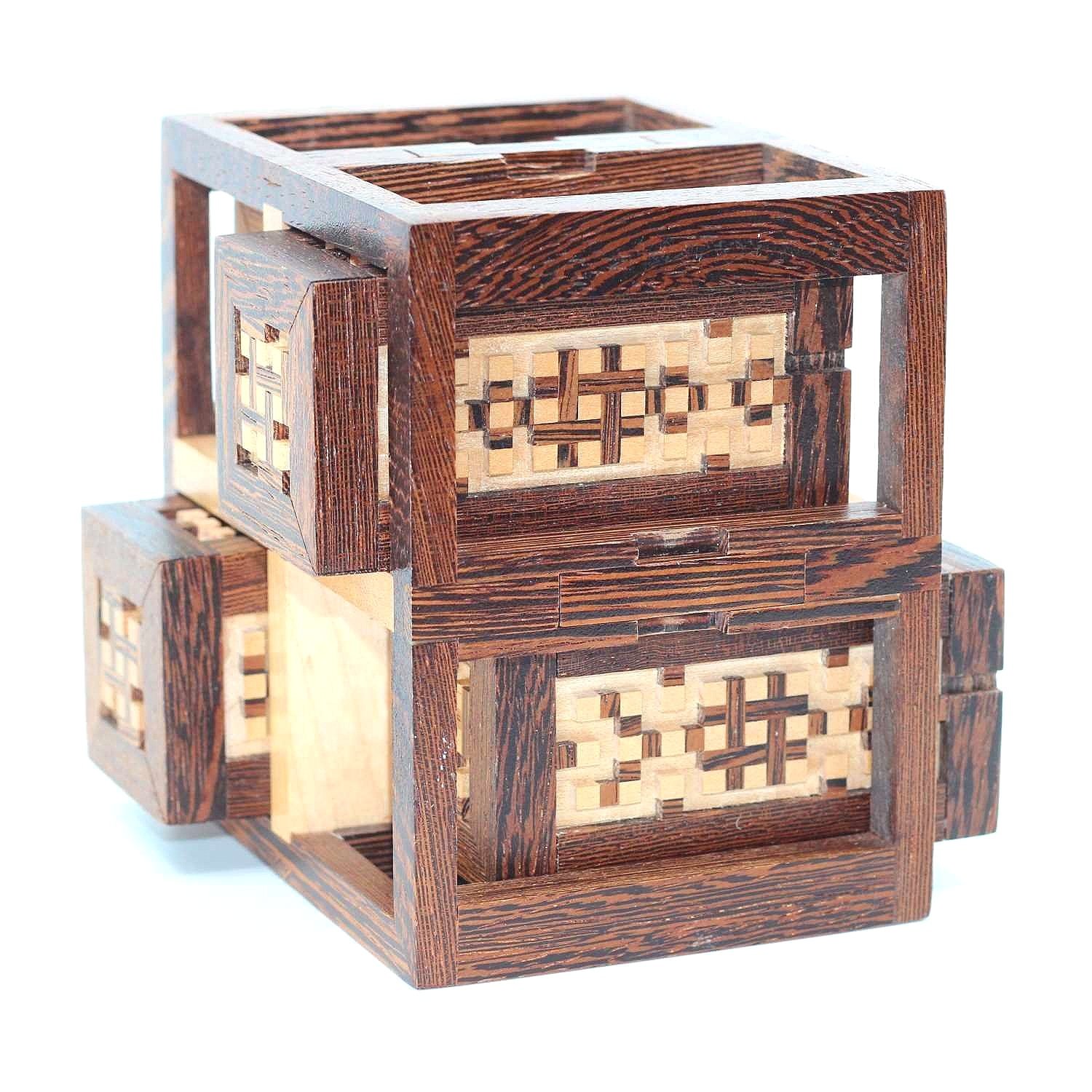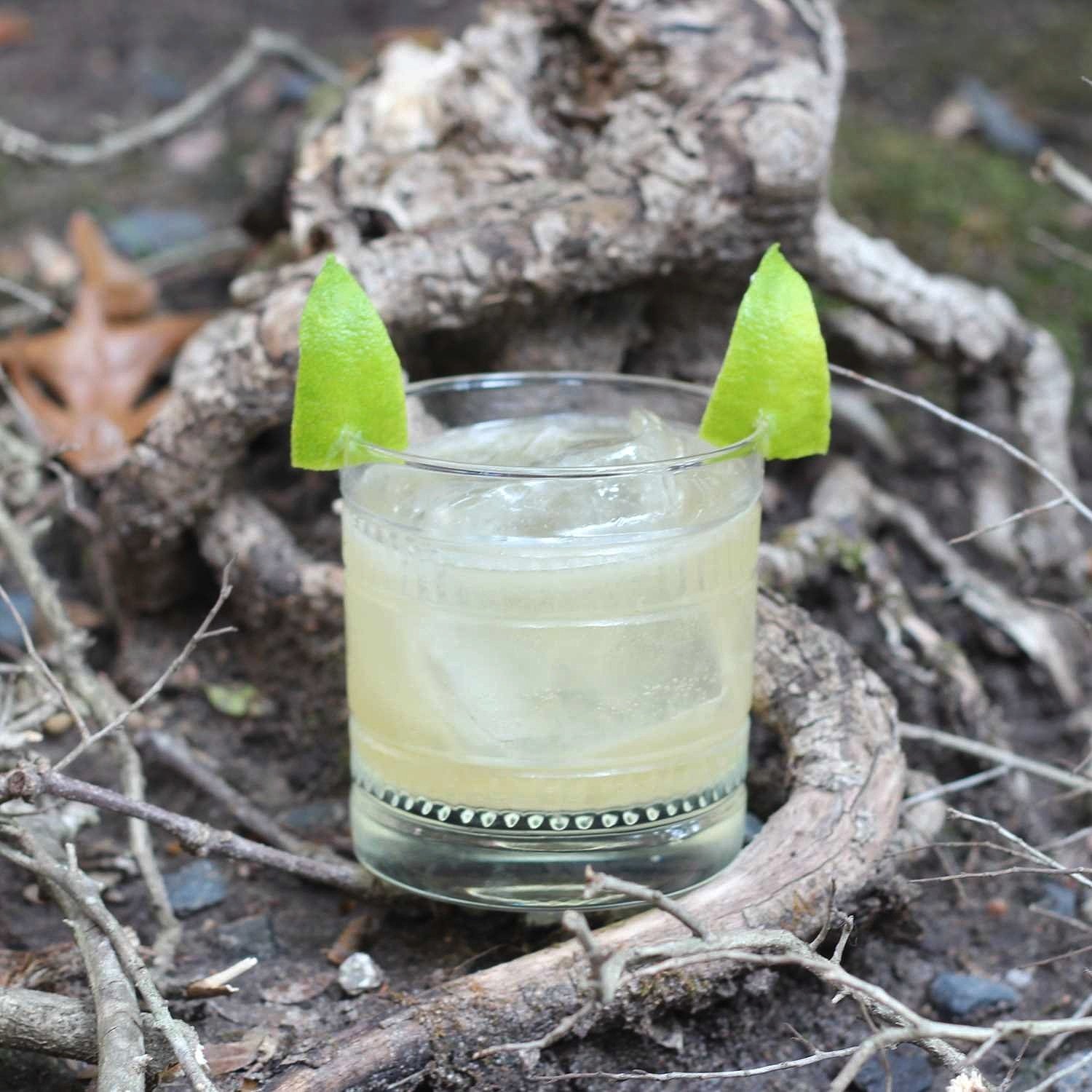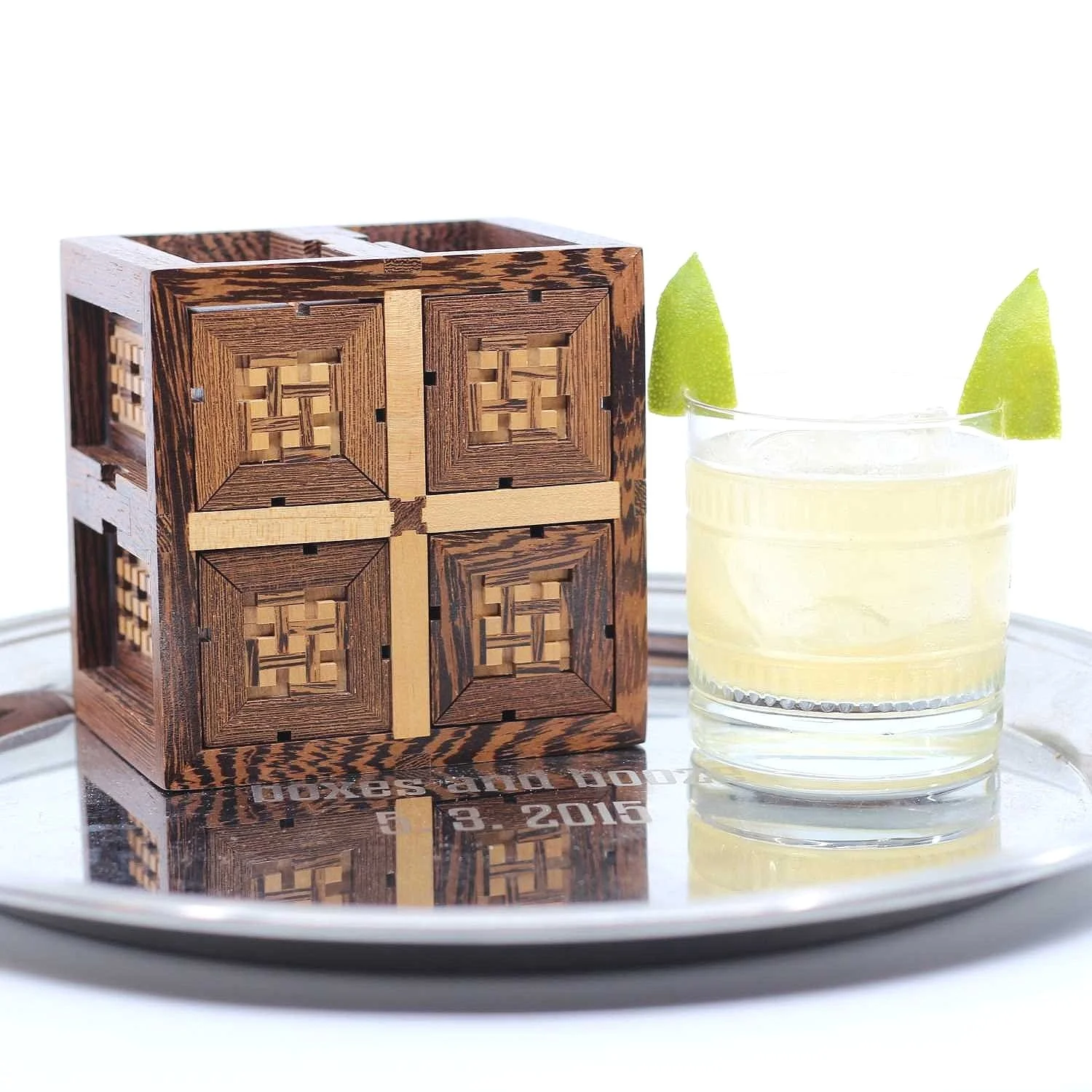The Devil’s Advocate
The Beast
There’s a chill in the air and the dark creeps in a little sooner, a little longer, stretching the shadows and turning all things spooky. Look closely around the corners, cause the devil is in the details. I’ve got a real treat for you on Boxes and Boos this year, one that has oh so many tricks. Just how many, you might ask? Now that, it turns out, is quite a story. Lucky for us, on this All Hallows Eve, we are in the presence of a few great storytellers.
The Beast (Stickman No 7) by Robert Yarger
Days of Camelot
A long, long time ago (almost, but not quite, twenty years now), legendary puzzle box maker Robert Yarger was busy trying to come up with new ideas to sell to his small group of fans, and wondering what to do with the surplus of boxes on his shelves. “Times were different back then. I still had No. 1 and No. 2 puzzle boxes for sale when No. 3 and No. 4 came out, and so on. I did not even assemble the last of the No. 1 puzzles for almost a decade. I made too many of those. It was not until around the Checkmate when I started selling out between puzzle runs. I would cut parts for a full run of puzzles (because that was most efficient), but it was not uncommon to just stop assembling them when sales stopped. I had to move quick onto the next project to keep money rolling in.” It’s hard to imagine, now, having a surplus of Stickman “Borg” boxes gathering workshop dust, but such was life before social media and internet hype. “Those No. 5 boxes were a big hit, but $500 was more than most would pay for any puzzle back then, so they took years to sell. People thought I was nuts to charge $55 for a No. 1. I had so many of those just sitting around that I gave them out as x-mas gifts. I had around 5 customers who would buy anything new I came out with back then, and I survived off of them for years.”
Origins
He recalls how the Beast evolved. “The puzzle started out as a simple box with two drawers that had interacting maze patterns cut into their bottom panels. But for the maze patterns to interact, one drawer perpetually had to be upside down from the other, no matter which way the box was facing, which made it impractical to put anything inside. And so, the interacting maze pattern theme was modified to have drawers side by side, with maze decorations into the drawer sidewalls instead, and swapping them allowed for an additional solution. This really multiplied the potential for solution complexity, because now each step required maze interactions on two sides, requiring strategy and planning to achieve a desired move. I noticed how the maze patterns were visually appealing as a decoration, but could not be appreciated while starting out in their box sleeves.” Rob realized by opening the sides of the frame, the intricate patterns could be appreciated, which also served to give the box its unique appearance. He then continued to have the patterns interact all the way around, on every side, multiplying the complexity further. “The biggest challenge, apart from so many tiny maze pieces being glued in, was just getting a perfect angled cut to merge 3 pieces together into the box's frame corners without a seam. Today it is not as much of a challenge with better equipment, blades, and experience, but back then it was a booger. I am not sure what I was thinking at the time. Obviously, I did not own a router back in those days, as it would have been so much easier using it to produce maze patterns over gluing in so many tiny little 1/8” wide pieces of wood. Some of those were tiny little cubes. I recall shattering 2 out of every 3 I cut, and spending time searching the shop floor for any survivors.”
handsome devil
Math
“The concept for the puzzle was simple. Each of the 4 removable compartments has identical maze sides, which allow for so many entirely different solutions based on the particular direction and orientation they are inserted again. The original version went out with, what I assumed to be the most complex orientation, but who knows. Eric Fuller (RIP) said there was no way to top my previous Borg Box design, but later relented that I had somehow managed to trump that one with this.
For some reason, there was much debate in puzzle forums over how many potential solutions could be achieved with its combinations. At one time, Nick Baxter did formal math to come out with 666 possible combinations. From that came its nickname as the “Beast”. Get it. . . this was its “nickname”, because “Nick – named” it. That makes me smile. It was only after that, where … nicknames for all my previous design also became a formal thing. Prior to that, puzzles just had their design run numbers.”
beast of burden
It turns out that the Beast does not, in fact, have 666 possible configurations, and the story of the numbers dates back to the online forum days in the years surrounding the puzzle’s creation. Nick Baxter relates, “[Beast box] was entered in the 2005 design competition. Rob's notes said there were over 4000 possible arrangements. [This is true, but does not account for duplicate arrangements which are no longer unique.] When the opportunity arises, I like to exercise my combinatoric skills with new puzzle configurations. I wrote a paper for one of the G4G books about how Burnside's Lemma can be applied to mechanical puzzles. And this was a decent challenge. I wrote to Rob that I figured just 666. There are 8 ways to permute the frame (because two opposite faces are different and identical), so each of his cases were roughly counted 8x. Rob actually got 2^12= 4096 (which he rounded down to 4000). This is actually the first of five cases in my calculation, so he was on the right track. Reducing this by a factor of 8, you'd get 512. The problem is that this simple logic eliminates a few too many cases, and that is the magic of Burnside's Lemma, that it accounts for these cases.”
The “number of the Beast” remained just so for a few years at that point, but in 2008 puzzle maker Derek Bosch inquired on the forums about the puzzle’s “Nickname”. As he is inclined to do, he modeled the assembly into the BurrTools software program, which suggested only 538 unique states. Mathematics professor Jim Strayer checked the math, noting at the time, “I feel somewhat gratified by Derek's number. I spent a bit of time the other day using a standard counting argument to try to compute the number of assemblies of "The Beast" up to rotation and came up with: 4(16+15+14+...+1)=4(16)(17)/2=544. I may have some duplications embedded in my solution somewhere.”
devil may care
Nick Baxter once again settles the argument. Revisiting his original calculations, he realized "For those who care, the last case in my earlier post had the error--the count for that case should have been zero. Here are the cases again, done right this time
The eight cases:
no move: each drawer goes in 8 ways, so there are 84 total ways.
rotate 90 (two identical cases): once one drawer is placed, then the other drawers are fixed. That's 8 cases twice.
rotate 180: here I can place two drawers independently, fixing the other two (the one's that are diagonally opposite). That's 82 cases.
face rotation (two identical cases): Again, I can place two drawers independently, fixing the other two. That's 82 cases twice.
diagonal rotation (two identical cases): the two drawers along the axis of rotation must rotate to be identical with themselves, which cannot happen. So there are no instances for this case.
So the total is (84+2*8+82+2*82+2*0)/8 = 538
This will only make sense if you read my paper! (Cases 2-5 are adding back arrangements that should not be subject to the 1/8 reduction mentioned above, addressing each of the ways the frame can be reoriented.) But the important thing is that it agrees with BurrTools! So I think that's the full history of the name, and the math!”
in the belly of the beast
Bootlegs
The Beast is one of Robert’s rarest puzzles. “In those ancient days of yore, it was an accomplishment for me to sell 15 of anything. I think there was just around that amount made of these puzzle boxes. Lacking interest at the time, extra pieces cut for this run were put in a storage box, where they remained for many years. I had little interest in finishing them myself, even after demand picked up. I sold left over pre-made parts for the last two as a kit, which changed hands a few times over the years. I received contact from multiple sources, asking for assistance in completing the kit they had just bought at auction, but all lost interest, with so many small maze pieces to install, and instead just marked up the cost to pass kits along to the next guy.
Eventually, the kits found their way to Stephen Chin, (Puzzle Master Platypus of the Order of the Lathe). But even he was like, “ehh . . . putting in all these little pieces of wood into the maze is a freaking lot of work.” He pawned it off on Peter Wiltshire, who obviously was at some moment in life where he had nothing better to do, and agreed to finish one of the kits for Chin in exchange for finishing the second for himself.
As a result, there are now 2 official bootleg copies of this puzzle that now exist out there in the world. The limited edition status remains intact. The spares are marked as prototypes in both markings and instruction books. But somehow, in my mind this makes them worth that much more. They have traveled back and forth over the world a few times, until they finally found a perfect shore where they could take root. They have history and story behind them. They are bootleg copies from the limited edition, and are rebels.”
black as the devil
The Devils Playground
Rob loves the thought process behind his creations. “My favorite part of this, and really all puzzles, is the designing phase. Back when the project was just two drawers, the maze patterns did not really matter, and most anything would do. But with a full wrap around of interacting mazes, a lot of thought had to be put into mazes. Some patterns would not allow for drawer insertion combinations that could fully go in all the way without locking up somewhere else. Indeed, this is why I was asking for help among our old Renegade Puzzle Designers Forum long ago, which set off the whole debate over the amount of potential combinations. I can't say where puzzle concepts come from. It is always from some different place. There were times both Eric and I struggled to come up with anything new. Not so much these days, and I have more projects than time left on this planet. But while the number of potential solutions formally changed, the puzzle name of “Beast” still stuck.” Rob also recalls, not so fondly, about how easily Wenge wood splinters. Cutting the tiny maze pieces required fingers to be so close to the blades, he was inevitably left with splinters, and “for some reason every wenge splinter seemed to get infected.” What the Devil? “To this day, I still occasionally find tiny little wenge squares around the shop, where they popped out from under my hold down stick when being cut.”
Devil in the Moonlight by Justin Burnell
Devil May Care
I’d be remiss not to suggest a shot of Jack Daniels as the perfect accompaniment to this Beast of a Box, a pairing pointed out to me by Robert Yarger himself. That ol’ devil whiskey ought to sooth the savage Beast. But it’s Halloween, and I also prepared this tricky little treat from Drastic Measure in Shawnee, Kansas, where they like to sneak the Peruvian brandy pisco on the menu as often as possible. Pisco is a bold, funky spirit most often made from the Quebranta grape and comparable to Italian grappa. It’s kind of spooky.
deal with the devil
Yet lo and behold, it pairs wonderfully with mango. I admit I was skeptical at first, but the flavors meld perfectly and produce a fruit forward spirit which is not too sweet. The gin and Cocchi aperitif balance the drink, and cinnamon syrup adds just the right seasonal notes for this delicious fall indulgence that might have you howling at the moon, devil may care. Cheers.
the devil’s playground
Devil in the Moonlight by Justin Burnell
1 oz mango-infused pisco
¾ oz lemon
½ oz floral gin
½ oz Cocchi Americano Bianco
½ oz cinnamon syrup
Shake ingredients with ice and strain into a favorite glass over a large cube. Mango chili candy garnish recommended, or a pair of lime wedge horns if you’re feeling devilish.
explore more:


